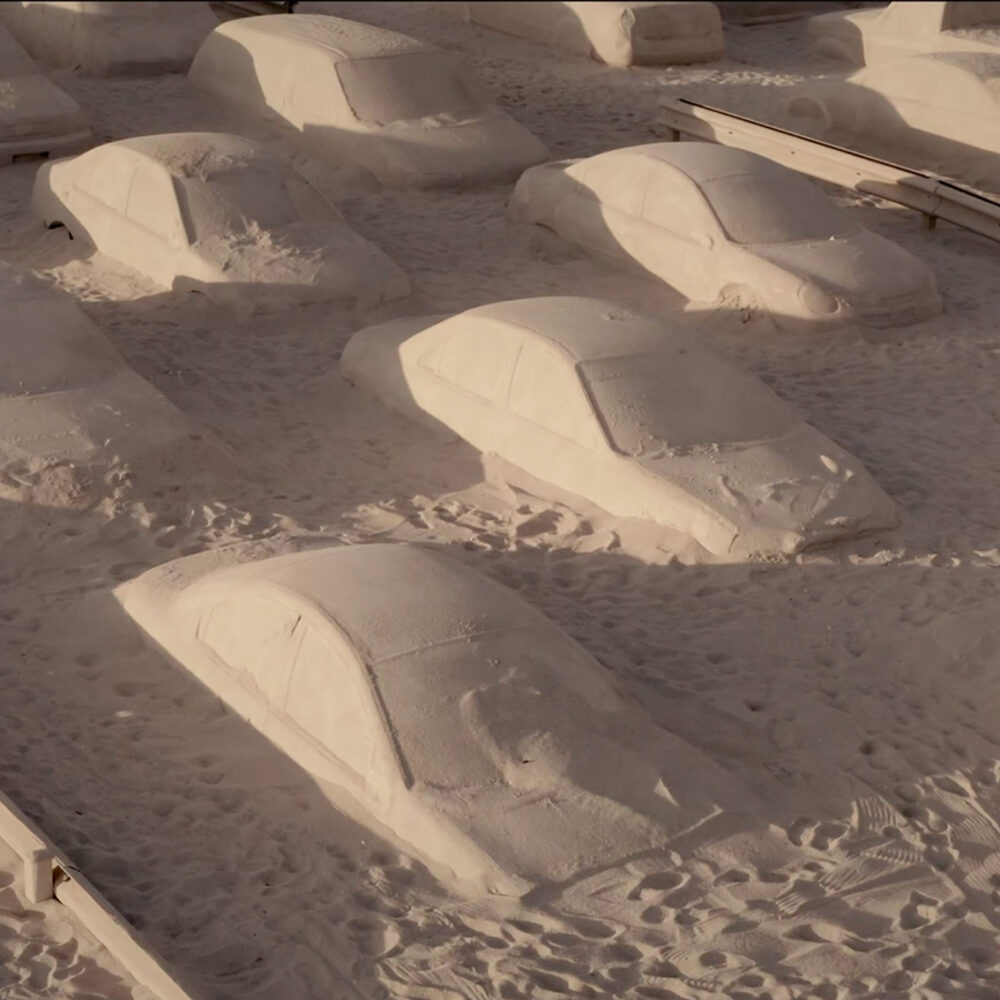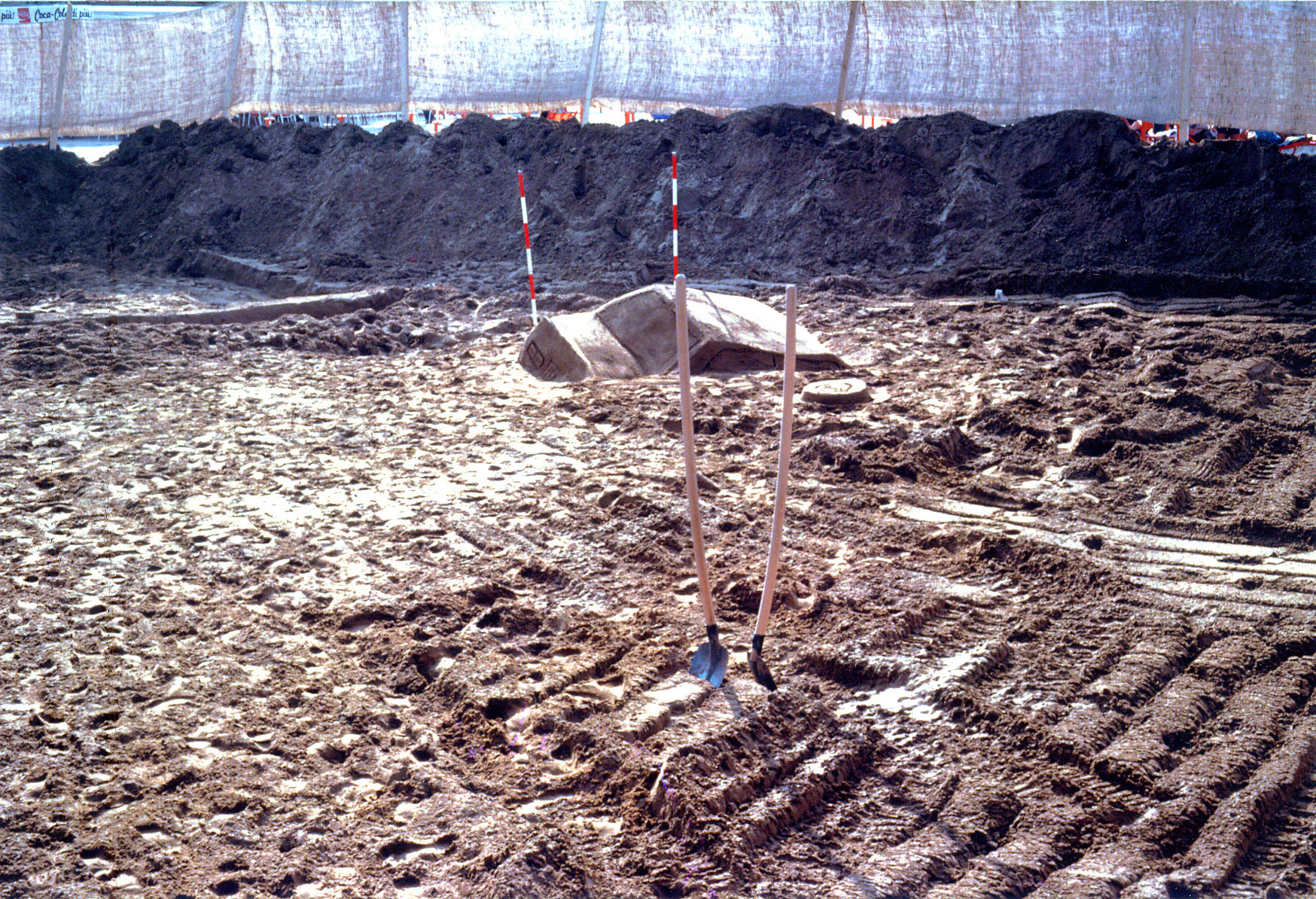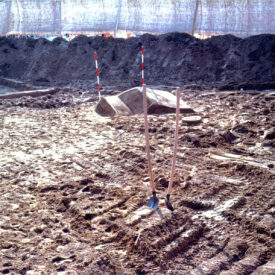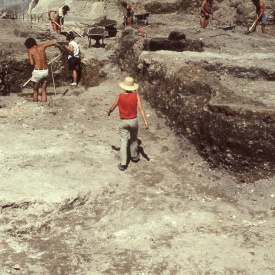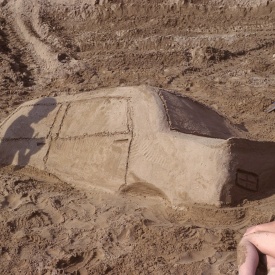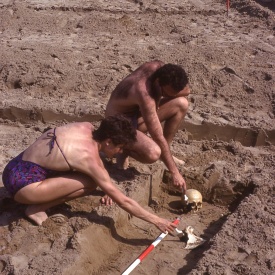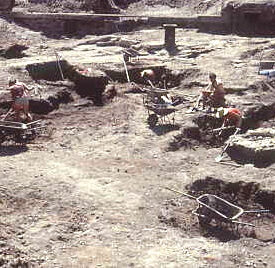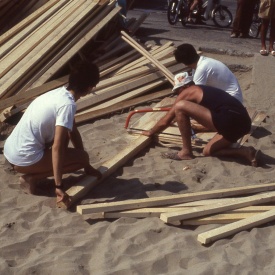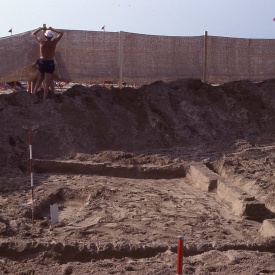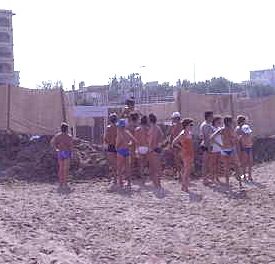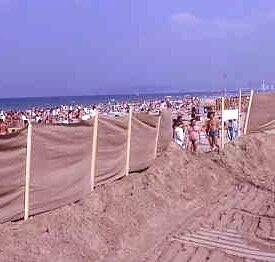TITLE / TITOLO: Sand Castle / Castello di sabbia
YEAR / ANNO: 1984
PLACE / LUOGO: Rimini-Riccione
1984 Sand Castle
Still fresh from my architectural degree in 1984, I took part in a sand castle competition. The organizers had invited a dozen of the most famous Italian architects to participate. I was included in the group thanks to a number of articles on sand castles that I had written for design magazines, making me the only Italian expert on the subject.
The competition took place on the beaches of Rimini and Riccione on the Adriatic coast and the castles were to be built in two days, during the last week-end of June.
My project simulated an archaeological excavation of the future; we were supposed to be looking for the ruins of a beach resort, possibly destroyed by an atomic catastrophe. I was helped in my field work by a few fellow graduates and students. We unearthed the remnants of a structure presumed to have been a cheap tourist hotel and various artefacts inside and around, including parts of furniture, personal belongings, and the remains of an Alfa Romeo.
I asked the Town Council to lend us two bulldozers for the main excavation, more than a meter deep and covering an area of 800 sq.m. The project area was cordoned off by a sand embankment and canvas wall to keep bathers out and build expectations among the public. We posted a large bogus sign outside the wall, explaining it was a project run by the Archaeological Department of the Italian Ministry of Culture.
Everything we found was carefully unearthed, photographed, measured, catalogued and left in plastic bags on the spot. I had also brought with me two human skulls and when the public, peeking under the canvas wall, thought we were truly discovering human remains, the emotion was at its peak. Someone in the public alerted the press and by 6.00 pm reporters and crews from local and national TV had came to record the event and everybody was convinced that this was a real archaeological find. At that point we had more than six hundred people trying to peek inside the enclosed area.
The official photographer from the sand castle competition, believing we were not part of the event, ignored us.
1984 Castello di sabbia
Appena laureato in architettura, nel 1984 ho partecipato a un concorso di castelli di sabbia. Gli organizzatori avevano invitato una dozzina tra i più famosi architetti italiani. Sono stato incluso nel gruppo grazie a una serie di articoli che avevo scritto per riviste di design sui castelli di sabbia, rendendomi l’unico esperto italiano in materia.
La competizione si è svolta sulle spiagge di Rimini e Riccione e i castelli dovevano essere costruiti in due giorni, durante l’ultimo fine settimana di giugno.
Il mio progetto simulava uno scavo archeologico del futuro; avremmo dovuto cercare le rovine di una struttura turistica sulla spiaggia, presumibilmente distrutta da una catastrofe atomica. Mi sono fatto aiutare nel lavoro sul campo da alcuni colleghi appena laureati e studenti. Abbiamo finto di scoprire i ruderi di un alberghetto economico e vari manufatti, compresi parti di mobili, oggetti personali e la carcassa di un’Alfa Romeo.
Ho chiesto all’Ufficio Lavori Pubblici del Municipio di prestarci due bulldozer per lo scavo principale, profondo più di un metro per una superficie di 800 mq. L’area del progetto è stata isolata da un terrapieno di sabbia e da una recinzione in tela per tenere a distanza i bagnanti e soprattutto suscitare un alone di mistero e aspettative nel pubblico. Abbiamo messo un grande cartello fasullo fuori dalla recinzione, spiegando che si trattava di un progetto gestito dal Dipartimento Archeologico del Ministero della Cultura italiano.
Tutto ciò che abbiamo finto di trovare è stato portato ala luce con estrema cautela, fotografato, misurato, catalogato e lasciato sul posto del ritrovamento imbustato in sacchetti di plastica.
Avevo anche portato con me due teschi antichi e quando il pubblico, sbirciando sotto il muro di tela, pensava che stessimo davvero scoprendo resti umani, l’emozione era al suo apice. Qualcuno nel pubblico ha avvisato la stampa e alle 18.00 giornalisti e troupe della televisione locale e nazionale sono venuti per documentare l’evento e tutti erano convinti che si trattasse di un’autentica scoperta archeologica. A quel punto avevamo più di seicento persone che cercavano di sbirciare all’interno dell’area chiusa.
Il fotografo ufficiale del concorso sui castelli di sabbia, pensando che non facessimo parte dell’evento, ci ha ignorati.
Crossroads / Intrecci
– Leandro Erlich, Traffic Jam, 2018
34 anni dopo!
